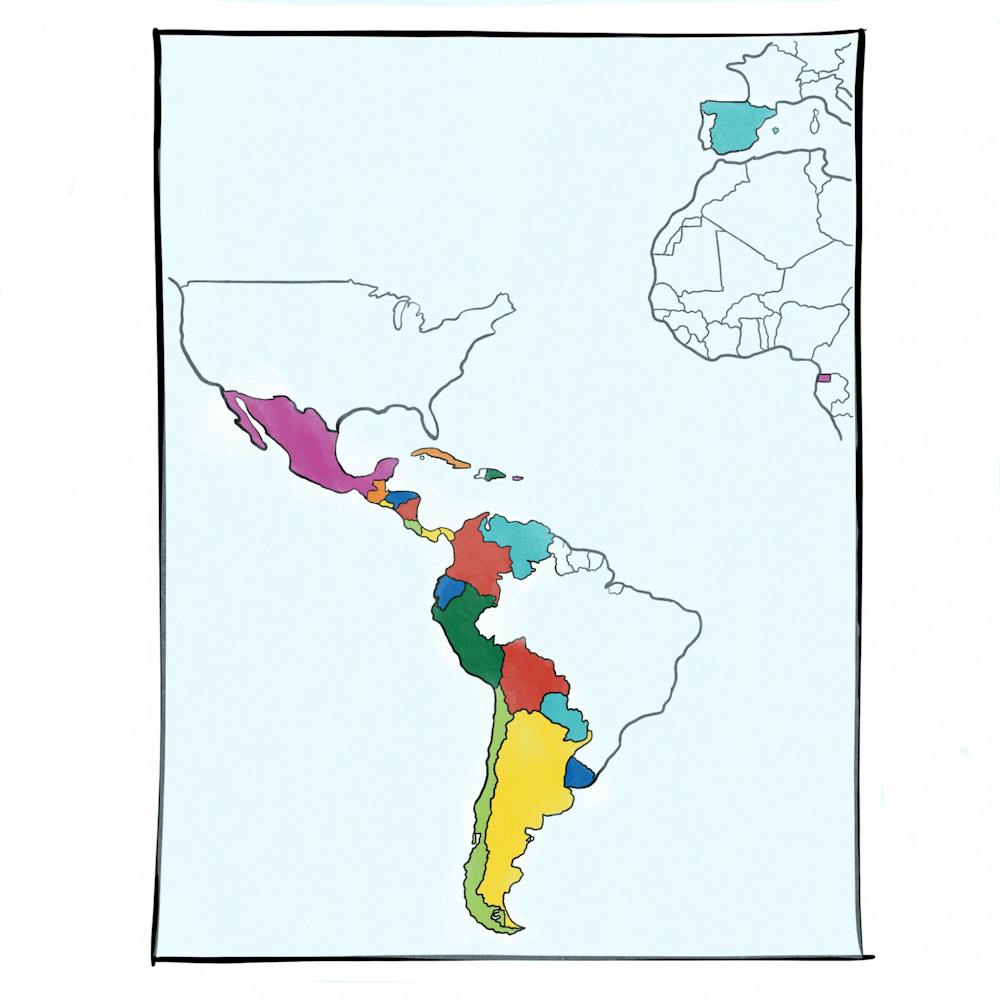When Nicaraguan Independence Day rolled around Sept. 15, Anastasio Ortiz ’25 was at a loss over how to celebrate the holiday that had meant so much to him back home in Nicaragua. Though he did not know any fellow Nicaraguans on campus, he wanted to do something in commemoration. So Ortiz invited his friends to his room to listen to some traditional Nicaraguan music, and the night became an opportunity for him to share his culture with his peers.
“It’s the little things like this that allow me to celebrate my country and … share my culture,” Ortiz said. “Brown is a very inclusive place. … People understand cultural differences and are very excited to hear about other experiences.”
About 14% of the class of 2026 are international citizens, Dean of Admissions Logan Powell wrote in an email to The Herald with more than a dozen Latin American countries represented. In honor of Hispanic Heritage Month, The Herald spoke with three Hispanic students at Brown about the communities they have found at Brown and the obstacles they believe stand in the way of a greater Latin American presence on campus.
Anahis Luna ’25, who is from San Miguel de Allende, a tourist town in central Mexico, feels there is a great sense of pride among the Hispanic and Hispanic American community on campus, with students always willing to “share in each other’s customs.” Just last week, Luna attended an event hosted by the Latinx Student Union that brought together several on-campus organizations for a night of “food, dancing and mingling.”
At the same time, Luna — who said she cannot name more than 10 Latin American international students on campus — feels a sense of disconnect between her experiences and those of second-generation Hispanic students on campus, she explained.
“I definitely wish that there were a lot more internationals from Latin America,” she said. “It’s really hard to discuss certain things because growing up in Mexico is just so different from the United States — there’s always that very small barrier.”
Ana Pereyra Caba ’24, originally from the Dominican Republic, felt similarly. “I have a lot of Hispanic friends — I even know a bunch of Dominicans — but none of them are internationals,” Pereyra Caba said. “I’m grateful for these friends, but it’s not quite the same. I was born and raised in the Dominican Republic, and there are a lot of experiences that come with growing up in developing countries that I wish I could relate (to) with someone.”
For Ortiz, the Global Brown Center proved to be a useful resource in connecting him with new international students, but very few have been from Latin America. “It’s very hard to create a community when you don’t hear about (the) number” of Latin Americans on campus, Ortiz said.
Ortiz added that he believes the University’s current need-aware international admission policy is a major barrier for Latin American international students to apply to Brown. He decided not to apply for financial aid as a way to prioritize his chances of getting accepted.
“We internationals are only going to apply where we have the best chance of getting in and being able to go, and only certain schools are need-blind,” Ortiz said. “If Brown isn’t one of them, international students are not going to look (because they) know they’re at a disadvantage.”
Luna said she took a risk during her application process by applying for financial aid, which in itself is a more “stressful” and “complicated” addition to the process. “If I wasn’t accepted, I would have known that financial aid probably played a huge factor,” she said. “That’s kind of something you go in knowing.”
Need-aware admissions also create a discrepancy in the types of international students that are accepted to the University and the countries they come from, Luna said. Many of the international students from Latin American countries at Brown tend to be wealthier, which does not account for the potential applicants who come from “more unfortunate circumstances,” she said. “There’s a lot missing from Brown.”
“Wealthier countries can more directly feed into the United States” education system, Luna said. “Brown needs to be more cognizant of … the different barriers that can keep students from applying to schools like this … and build more specific connections within different countries in Latin America itself.”
The University recently announced its plans to become fully need-blind for international students beginning with the class of 2029, The Herald previously reported. Powell hopes that, as a result, the University will see a sharp increase in international students from “a broader range of socioeconomic backgrounds” in the coming years, he wrote.
“It is hard to overstate the importance of this shift as a means of better reflecting the socioeconomic diversity of our Latin American students and of our students from around the world,” he wrote.
Pereyra Caba remembers crying when she learned the news of Brown going need-blind in the coming years, and she hopes this is just the first step in the University more actively recruiting applicants from Latin American countries.
This initiative “opens up the opportunity for a lot of applicants from many different backgrounds,” Luna said. “Being need-blind … levels the playing field (so) that you feel like you actually have a chance at college.”

Alex Nadirashvili was the managing editor of multimedia and social media for The Brown Daily Herald's 133rd Editorial Board. As a former University News editor, he covered faculty, higher education and student life, though his proudest legacy is The Brown Daily Herald TikTok account.





